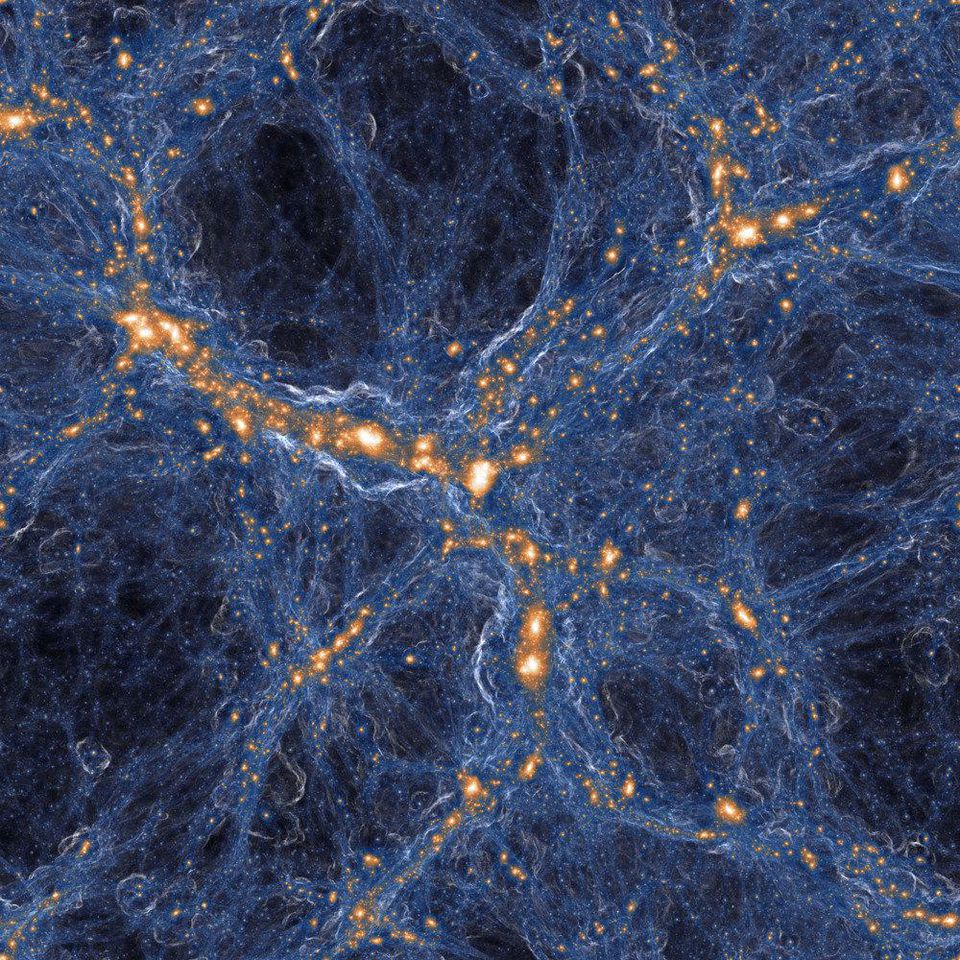11-Sigma Detection of Dark Energy Comes From Measuring Over a Million Extremely Distant Galaxies
After galaxies began to form in the early universe, the universe continued to expand. The gravitational attraction between galaxies worked to pull galaxies together into superclusters, while dark energy and its resulting cosmic expansion worked to drive these clusters apart. As a result, the universe is filled with tight clusters of galaxies separated by vast voids of mostly empty space.
The scale of these clusters and voids is based upon the rate at which the universe has expanded over time. The effect is similar to the way air molecules are clustered together by the varying pressure of sound waves, so the effect is known as baryon acoustic oscillation (BAO). Through this effect, astronomers can study dark energy by measuring the position and redshift of more than a million galaxies. Gathering and analyzing galaxies was first done by the Baryon Oscillation Spectroscopic Survey (BOSS). It was then extended to eBOSS, which has released its first results.

This new survey analyzed galaxies ranging from 0.7 – 1.8 billion light-years away, studying the BAO effect just as the early BOSS studies did. But eBOSS also looked at an effect known as redshift space distortions (RSD). This allowed the team to take into account the motion of a galaxy within space as well as cosmic expansion.
Within the standard model of cosmology, the distance of a galaxy can be determined by its redshift. Because the universe is expanding everywhere, the more distant a galaxy is, the greater the expansion of space between us, and the greater the redshift. But galaxies also move through space, and their relative motion can also contribute a redshift or blueshift. As a result, the overall redshift could be skewed, making our measurements of BAO less accurate. Through RSD, the team could account for this statistically, making their overall results much more accurate.
By combining BAO and RSD, the team confirmed the existence of dark energy to a stunning confidence level of 11-Sigma. Typically, a scientific result to 5-Sigma is taken as confirmation. A result at 11-Sigma is so strong it is about as close to certainty that we can get. Dark energy and the accelerating expansion it drives is definitely real.
Of course, we still don’t know what dark energy actually is. One idea is that dark energy is an inherent property of space and time. A cosmological constant that causes the universe to expand. Another is that dark energy is an energy field that fills the universe, like a fifth fundamental force. To distinguish between these conflicting models, we must not only confirm the existence of dark energy, but also whether it changes over time, or varies depending on the direction we look. Studies such as eBOSS will give us the data we need to understand the cosmic mystery of dark energy.
Reference: Gong-Bo Zhao, et al. “The completed SDSS-IV extended Baryon Oscillation Spectroscopic Survey: a multitracer analysis in Fourier space for measuring the cosmic structure growth and expansion rate.” Monthly Notices of the Royal Astronomical Society 504.1 (2021): 33-52.
The post 11-Sigma Detection of Dark Energy Comes From Measuring Over a Million Extremely Distant Galaxies appeared first on Universe Today.
Universe Today
Go to Source